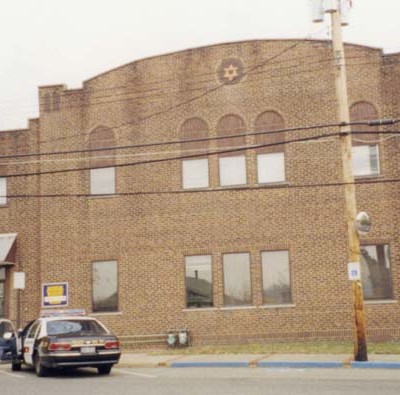
The area at the juncture of the Ohio River and Beaver River was settled in the late 18th century and incorporated as a borough in 1849. Glass production began in the 1870s and expanded in the early 1900s, becoming the most important industry in the borough.
The early settlement of the area brought Jewish merchants in the late 19th century. A few Jewish families were living in Rochester as early as December 1871, when twelve Jewish families from several towns throughout the Beaver Valley area arranged for Rabbi Judah Wechsler of Columbus, Ohio, to speak at a church in New Brighton, Jacob Feldman wrote in The Jewish Experience in Western Pennsylvania, A History: 1755-1945.
The Jewish population of Rochester and the surrounding towns grew during the first two decades of the 20th century. A group of families from Rochester, Beaver, Monaca, Freedom and Conway chose Rochester as a central location for worship services and organized Tree of Life Congregation as early as 1918. Over the following decade, the congregation met on the third floor of the Kirby Building on Brighton Avenue, at the Masonic Hall on Pennsylvania Avenue and in rooms owned in the Leaf Building occupied by the Chamber of Commerce. They chartered the congregation in 1927. The founding members were I. Ignatz Ecker, Jacob Fineman, Benjamin Reisberg, Jacob Cohen, Elias Caplan, Lester Caplan, David Gordon, Max Sobel, Max Barnett, William Barnett, Harry Garson, Max Moss, Phillip Caplan, A. Mitchell Caplan, Ralph Levitan, Morris Weiss, Nathan Frummerman, Elias Gordon, Sandor Weiner, Morris Grossman, Aaron Green, Nathan Stoll, Emil Winograd, Samuel Cohen and Henry Margolis.
Tree of Life dedicated a new two-story synagogue at Pinney Street and New York Avenue in 1928. The building had a social hall on the first floor and a sanctuary on the second floor. I. Ignatz Ecker served as the spiritual leader of the congregation in its early years. One of the notable children of the community in its early years was Rabbi Leonard Winograd, who later led congregations in Johnstown, Pa. and McKeesport, Pa.
Aside from a Ladies Auxiliary, a Men’s Club and a Juniors’ organization at Tree of Life, most of the Jewish communal organizations Rochester were part of larger efforts throughout the Beaver Valley area, including a chapter of the National Council of Jewish Women founded in 1917 and a religious school organized under the auspices of the Southwestern District of Pennsylvania Jewish Religious Schools program, B’nai B’rith Lodge No. 777 founded in 1921, a chapter of Aleph Zadik Aleph founded in 1929 and B’nai B’rith Girls founded in 1941 and a chapter of Hadassah founded in 1945. In 1953, the congregation purchased a cemetery plot above Marion Hill in Pulaski Township.
Despite the proximity of Rochester to the much larger Jewish community of Beaver Falls, the Jewish population of the borough grew in its early years. The American Jewish Yearbook listed a population of 62 in its 1928-1929 edition, along with 15 in Freedom and 32 in Monaca. The 1940-1941 edition listed a Jewish population of 100 for Rochester, with an additional 39 in Beaver, 15 in Freedom and 14 in Monaca. The total population of Rochester started to decline in the 1930s, after a major glass factory filed for bankruptcy, and the Jewish community soon declined as well. Tree of Life had 50 members in 1948 and only 27 members by 1957, according to congregational notes. By the early 1970s, the Jewish community was dormant. Tree of Life sold its synagogue in 1973 and effectively merged with the Beaver Valley United Jewish Community Center.